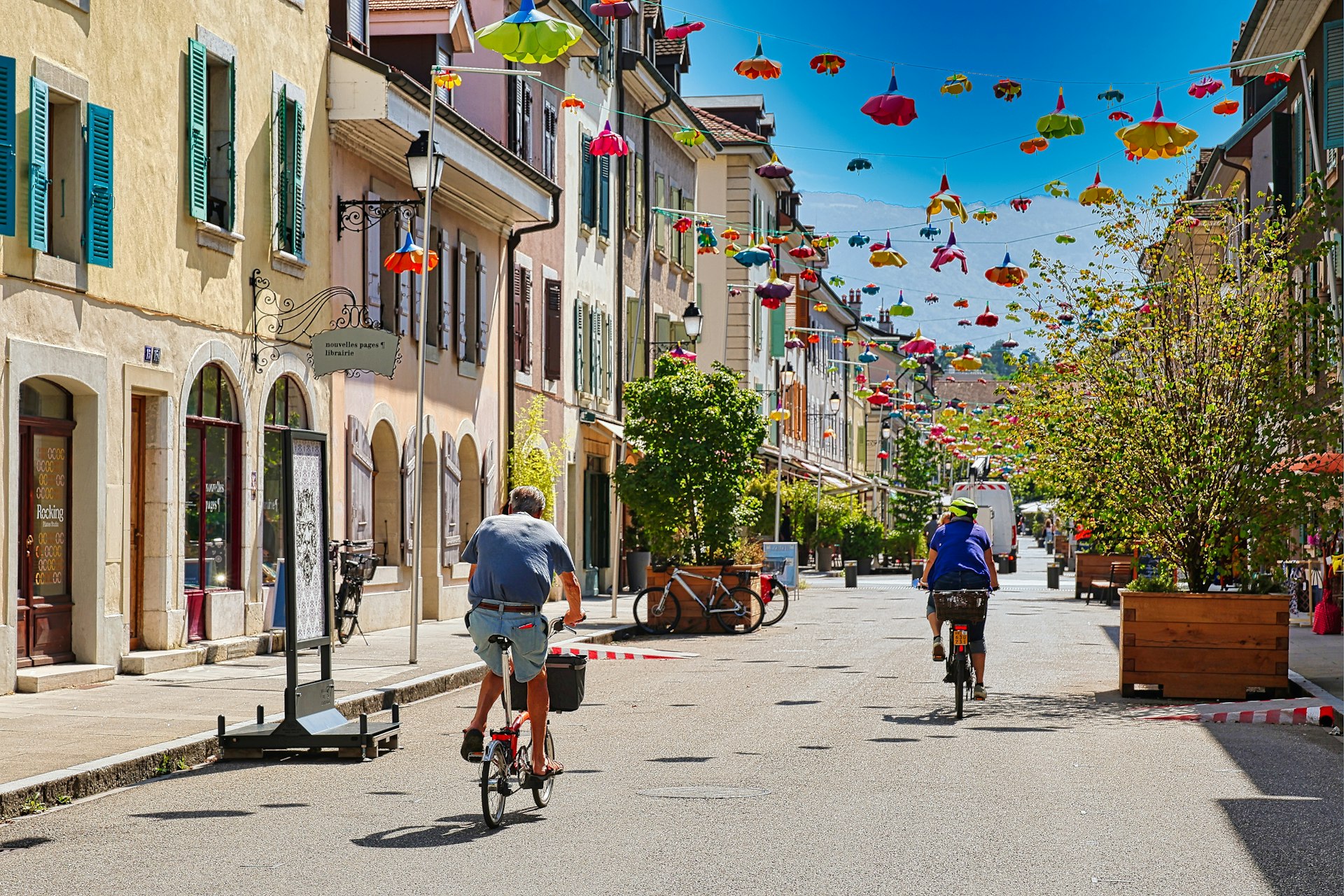Mastering the Art of Frugal Travel: Practical Lifestyle Tips for Exploring on a Budget

Photo by Nick Noel on Unsplash
Introduction: Embracing a Frugal Travel Lifestyle
Traveling the world does not have to be a luxury reserved for the wealthy. By adopting a frugal travel lifestyle, you can see more places, experience authentic cultures, and create lasting memories without breaking the bank. This guide provides actionable tips and comprehensive guidance for maximizing your adventures while minimizing expenses. Whether you are planning your first budget trip or seeking new ways to stretch your travel funds, these strategies will help you explore the world affordably and confidently.
1. Smart Destination Selection for Maximum Savings
One of the most impactful decisions for frugal travel is choosing the right destination. Opt for countries or regions with a lower cost of living or a weaker currency compared to your home country. For example, Southeast Asia, parts of Central and South America, and Eastern Europe are well-known for their affordability. Even within traditionally expensive regions, you can find less-touristy cities or towns that offer lower prices on accommodation, food, and activities. Consider alternatives to popular hotspots-such as Portugal instead of Spain, or non-Euro-zone European countries-to benefit from lower daily expenses. This approach is especially effective for longer trips, as ongoing savings on meals, accommodations, and transportation can offset higher upfront costs like airfare [4] .
To research affordable destinations, use reputable travel blogs, government tourism sites, and online communities. Search for terms like “budget travel destinations 2025” or “cheapest countries to visit” and compare average daily costs. Always confirm current safety advisories and visa requirements by visiting the official government websites of both your home country and your destination.
2. Travel Timing: Off-Season and Shoulder-Season Strategies
Timing your trip can result in significant savings. Traveling during off-peak or shoulder seasons-just before or after the main tourist rush-can dramatically reduce costs for flights, accommodations, and attractions. For example, visiting Europe in early spring or late autumn can mean lower prices and fewer crowds. Some travelers have reported saving hundreds of dollars on rentals and entrance fees by adjusting their travel dates [4] . Additionally, flying midweek (such as on Tuesdays or Wednesdays) and booking flights during sale periods can lower airfare costs [3] .
To identify the best times to travel, consult fare comparison sites and official tourism boards. Use search terms like “best time to visit [destination] on a budget” and compare historical price trends. When uncertain about exact dates, flexible search tools can reveal the cheapest periods for both flights and hotels.
3. Advance Planning and Flexible Booking
Planning ahead is essential for frugal travel but so is flexibility. For flights and accommodations, booking well in advance often leads to better rates, especially during popular seasons. Conversely, some last-minute deals can be found if you are able to remain flexible with your dates and destinations. Research the specific booking patterns for your chosen region; some attractions or tours (such as the Alhambra in Spain) require advance reservations, while others may offer better deals in person [2] .
When evaluating bookings, compare prices across multiple providers and consider using incognito browsing modes to avoid dynamic pricing. If you are not sure when to book, consult travel forums or budgeting communities for up-to-date advice.
4. Accommodation: Prioritizing Savings and Flexibility
Accommodations often account for a significant portion of travel expenses. Hostels, guesthouses, and vacation rentals (like Airbnb) frequently offer better value than hotels, especially for longer stays. Booking several nights in one location can sometimes unlock discounts. For families or groups, renting an apartment with kitchen facilities allows for further savings by enabling you to prepare your own meals [1] .
Alternative accommodation options include house-sitting, home exchanges, and volunteering in exchange for room and board (such as through Workaway or WWOOF). To explore these, visit established platforms and search for verified opportunities. If you are unsure where to start, look for traveler reviews and safety guidelines on independent travel forums or official program websites.
5. Food and Dining: Eating Well for Less
Dining out for every meal can quickly exhaust your budget. Limit restaurant visits and instead shop at local markets or grocery stores to prepare simple, healthy meals. If staying in hostels or vacation rentals with kitchen access, cook your own breakfast and lunch, and reserve eating out for special occasions or local specialties [1] . Street food is another affordable way to experience local cuisine safely and authentically.
When eating out, seek local recommendations for inexpensive eateries. Lunch menus are often cheaper than dinner, and some cities offer “prix fixe” deals. To further cut costs, pack snacks or sandwiches for day trips and excursions. Many travelers find this both convenient and economical [2] .
6. Transportation: Making the Most of Public and Alternative Transit
Flights often consume the largest share of a travel budget. To minimize costs, use fare aggregators and set price alerts for deals. Once at your destination, embrace public transportation-trains, buses, and trams are usually far cheaper than taxis or car rentals [3] . Overnight trains or buses can also double as accommodation, saving you the cost of a hotel night.
Many cities offer travel passes or discount cards for public transit, which can provide unlimited rides over several days. Research these on official city or regional transport websites. In rural areas or places with limited transit, consider carpooling or rideshare apps. Always compare the cost and safety of various options before committing.
7. Activities and Experiences: Prioritizing Free and Low-Cost Options
Many memorable travel experiences come at little or no cost. Research free walking tours, public museums, parks, and cultural festivals in your destination. Some attractions offer free entry on certain days or for children-always check official attraction websites during your planning [1] . Outdoor activities such as hiking, swimming, and local markets are often free and offer rich cultural insights [2] .
For paid attractions or tours, look for bundled tickets or city passes that include multiple sites at a discounted rate. If you are a student, senior, or traveling with children, inquire about available discounts. To maximize free experiences, search official tourism websites or visitor centers for up-to-date lists of complimentary events and activities.
8. Packing and Travel Gear: Light and Efficient
Packing efficiently can save time and money. Traveling with only carry-on luggage avoids checked baggage fees, which can add up quickly, especially on budget airlines [5] . Choose multi-purpose clothing and limit non-essential items. Regularly washing clothes-either by hand in your accommodation or using local laundromats-allows you to pack light and avoid unnecessary costs.

Photo by Barbara Maier on Unsplash
Keep toiletries under airline liquid limits and consider compact, travel-sized versions of necessities. For electronics, bring only what is essential and ensure you have the appropriate power adapters for your destination. Packing light not only reduces costs but also increases flexibility and mobility, especially when using public transportation or moving between cities.
9. Additional Money-Saving Tips and Precautions
To avoid extra charges, watch for foreign transaction fees on credit and debit cards. Research and consider opening a travel-friendly bank account or prepaid travel card with low or no fees. Always inform your bank of travel plans to avoid service interruptions. When exchanging money, compare rates at banks, official currency exchanges, or withdraw directly from ATMs (checking for associated fees first). Consult your bank’s official website for updated policies and travel recommendations.
Protect yourself from unexpected expenses by purchasing travel insurance. Policies typically cover emergencies, cancellations, and health incidents that could otherwise result in significant costs. Compare plans from verified providers and read reviews on established platforms before purchasing.
Conclusion: Sustainable Frugal Travel for Lifelong Adventure
Frugal travel is about making conscious choices, planning ahead, and embracing flexibility. By applying these tips-selecting budget-friendly destinations, traveling in the off-season, using public transport, and prioritizing free experiences-you can expand your horizons without exceeding your financial limits. Remember, thorough research and careful planning are the keys to maximizing your travel experiences for less. Always consult verified sources, use official channels for bookings, and seek advice from experienced travelers to ensure a rich and affordable journey.
References
- [1] Saving Talents (2022). The Ultimate Guide to Frugal Travel – Detailed money-saving strategies for travel planning, dining, and activities.
- [2] Taylor On A Trip (2024). 23 Must-Know Budget Travel Tips – Real-world advice for affordable travel, including booking strategies and free activities.
- [3] EF GO Blog (2023). How to Travel on a Budget: 9 Best Tips – Practical planning and transportation advice for budget travelers.
- [4] That Travelista (2025). How to Travel Cheaper: A Beginner’s Guide – Comprehensive guidance on destination selection and off-season travel.
- [5] Budget Travel with Gabby (2024). How To Afford Traveling The World In Your 20s – Luggage, packing, and lifestyle tips for young travelers.



